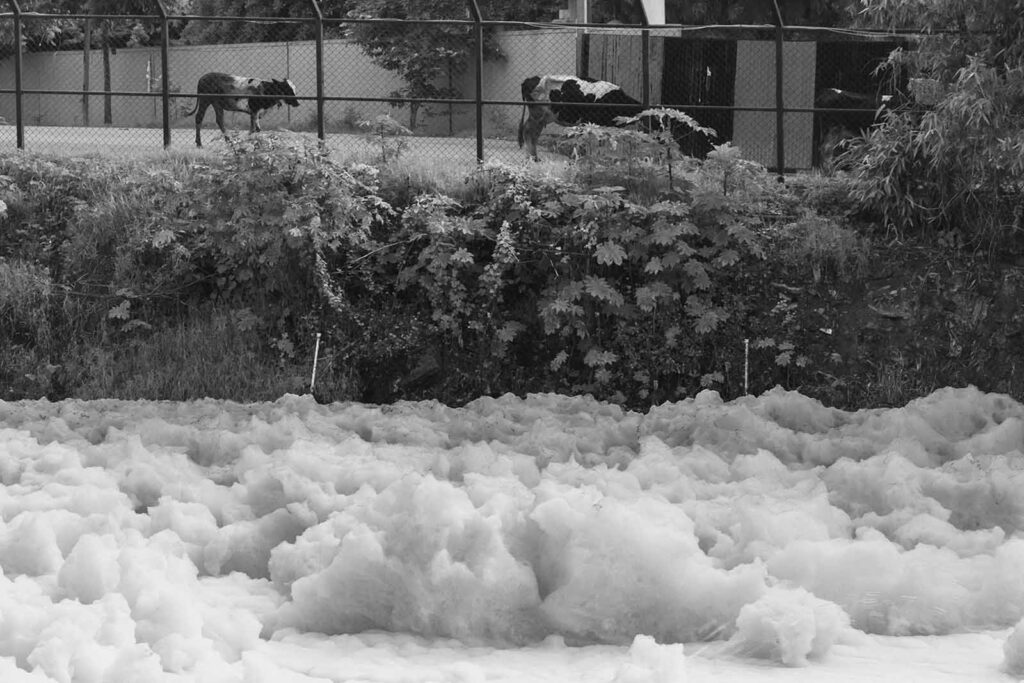There was water
Artist Statement
When I began photographing the Bengaluru’s frothing and blazing lake – the Bellandur Lake – I was drawn to the water landscape that at every foot is tarnished brutally. The denuded water felt mushy and rickety, and the stench had me suffer with burning nose irritation for a week. Without hindrance, I was able to spot a steady parade of trucks dumping garbage and debris from construction sites into the water, that eventually turns water into a mountain of land.
The deeper I dug, the more I came to see how polluted the ecosystem was: the incalculable amount of flammable methane generated from its oxygen-starved waters has been resulting in disappearance of fishes in the lake and depletion of wildlife in and around the lake. Most importantly, it has resulted in pollution of groundwater table in the surrounding areas. Since groundwater toxicity is not visible to the eyes, people and authorities live in denial of its fatal consequences. The pretty snow white foam drifting across water do not conventionally add a picture of hazard to be taken seriously. The extreme pollution and encroachment of the water body is visible yet ignored because of an illusion that people do not depend on it directly for their survival while they are willing to live on the periphery with a lake view.
What intrigued me to choosing the subject for visual research here is the water that catches large fires occasionally and small ones along the banks every day. Hadn’t we always learnt that water should be used to extinguish, not be fuel for a fire! Hence, I went on to explore the compromised deal between the lake and its surroundings. While I made pictures to shed light on what it means to burden a water-body with chemicals at this industrial scale, I also hope that the pictures communicate the silently accepted relationship of living beings with the environmental degradation. The intent is to investigate the comforting settlement between the living and dead elements in the ecosystem that has let encroachment be accepted as a new normal in the age of unplanned rapid urbanization and all-indoor-convenience.
What further intrigued me to stay put with my research was when I landed on the fact that the 1000 acre expanse of the Bellandur Lake is human-made and the history of it can be traced back to 3000 years. Consequently, it tricked the mind into sensing the actual form of the lake containing real water. The lake was built as the lifeline for surrounding villages and was extensively used for irrigation and drinking purpose. People of Bellandur and nearby villages used to celebrate annual ‘Theppotsava’ (boat festival) on this now infamous lake. The repair and maintenance of the lake was considered a tradition of great social, religious and ethical importance. Therefore, I went on to capture the once bountiful lake that has become the largest septic tank in the city, while I analyzed the complete disregard for its magnificent history, at some corner of my head. I’m captivated by the idea that water landscape like this express material culture.
The project is to recollect, investigate and think through the sum of apathy and politics that has led people to want to look at the choking lake and enjoy their tea by their balcony because affording an indoor air purifier is a simpler task.
Please refresh if PDF not visible
Akshay Urja, Direct Renewal Energy


